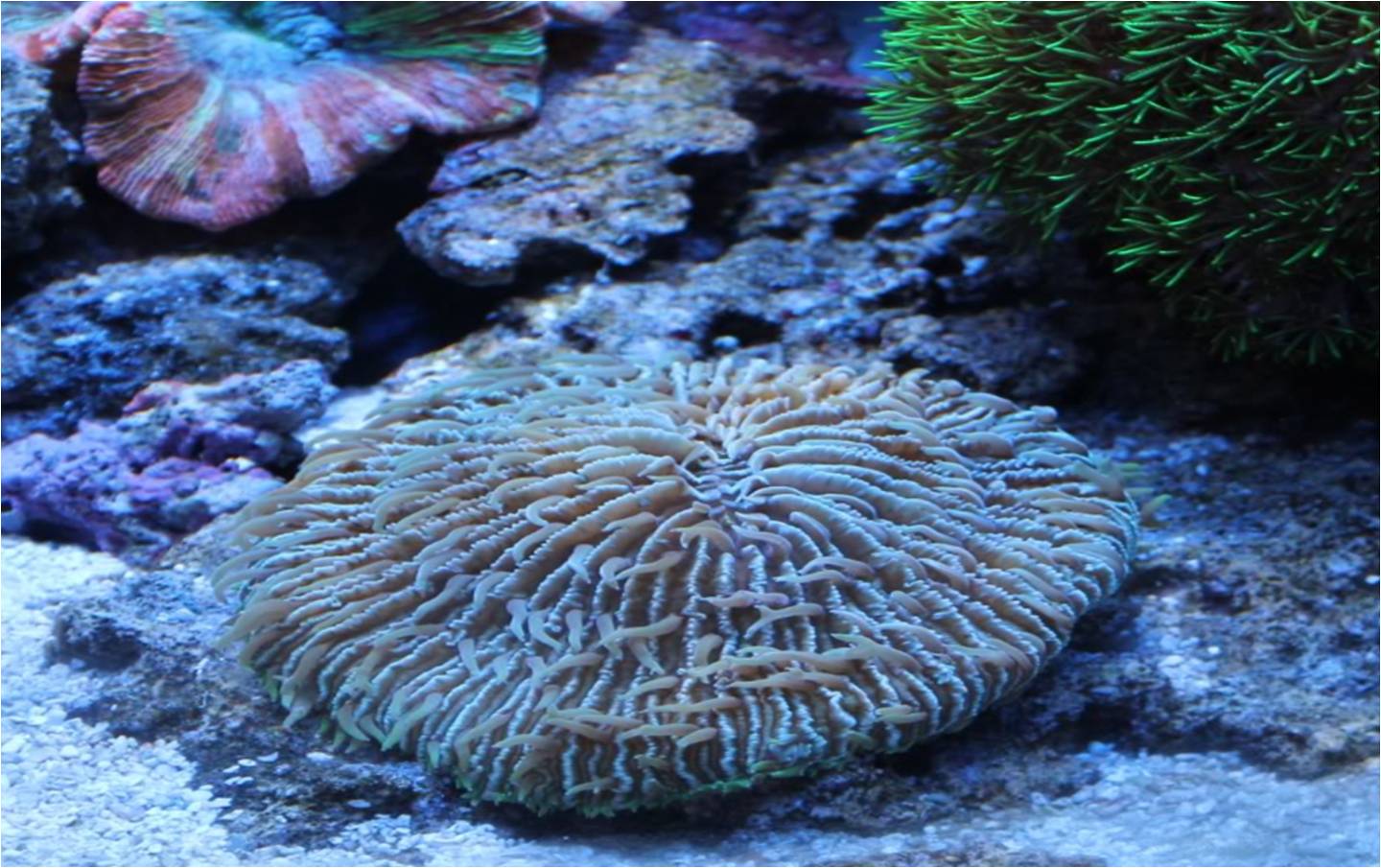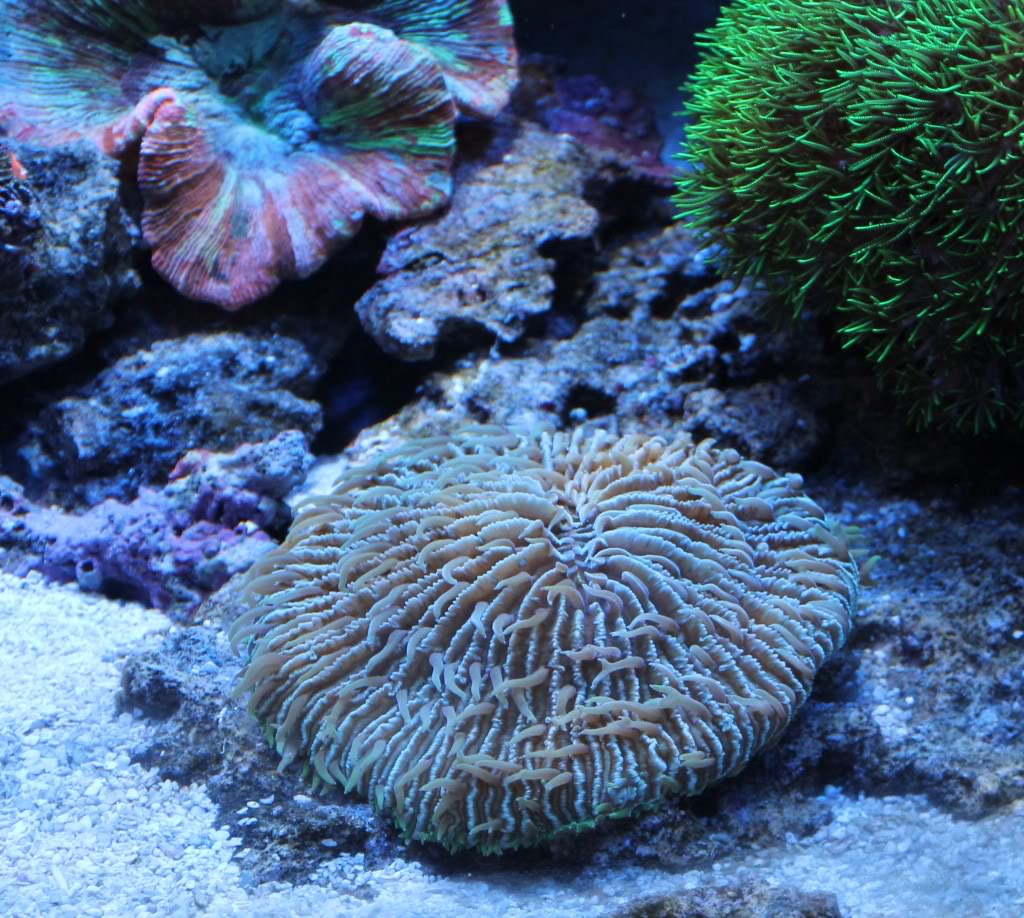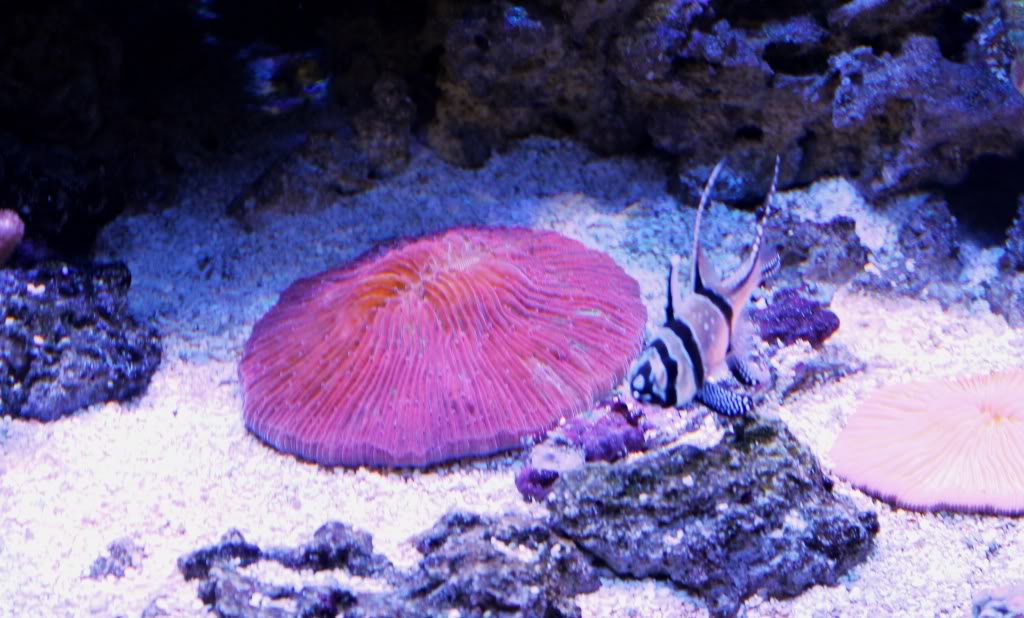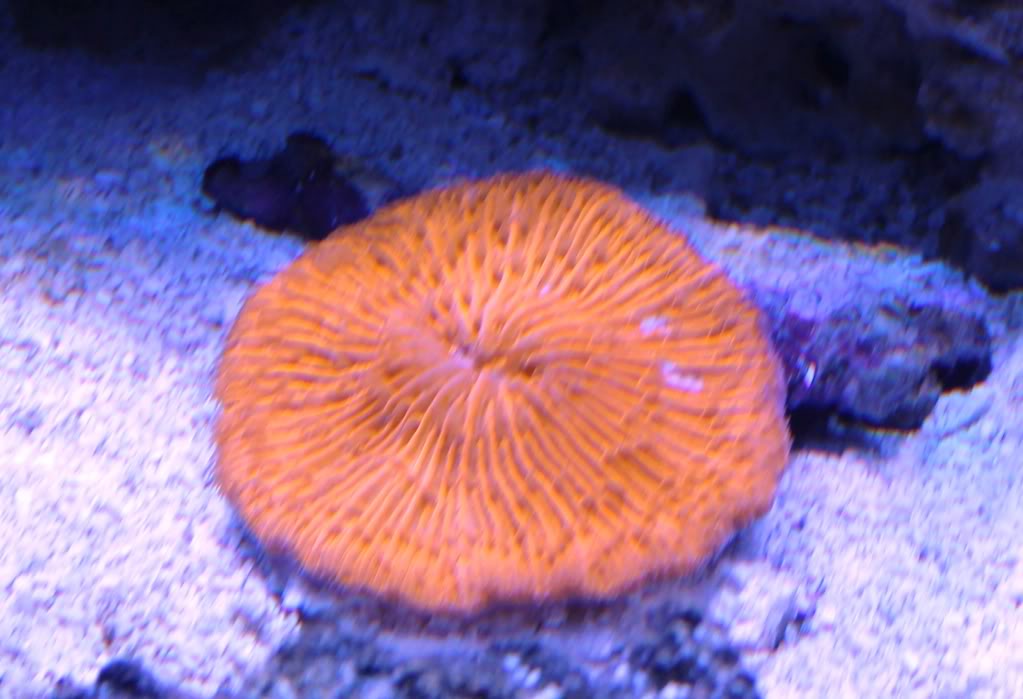
Plate Corals
Scientific Name: Fungia Repanda
Common Name: Plate Coral, Fungia Plate Coral,
Type of Coral: LPS (Large Polyp Stony Coral)
Lighting: Moderate
Flow: Low/Moderate to Moderate
Care Level: Moderate
Temperament: Semi-aggressive to Aggressive
Appearance
As the name suggests, the plate coral is shape almost like a plate, with a round and somewhat flat body which raises a little in the center where the mouth is. It is also covered with short little tentacles which can typically range in length from 1/8 to ¾ of an inch. They can also come in a very wide range of colors from brownish colors to bright yellows, reds, blues and oranges.



Water Conditions
The below link highlights typical water conditions plate corals, as with most LPS, will require. As this is a moderately difficult coral to keep, you should ensure your dKH, Cal and Mag levels are maintained at all times with minimal nitrate and phosphate levels. As this coral also has a calcified skeleton, it will consume calcium from your water. In set-ups with a good amount of LPS corals, it is not uncommon to have to dose dKH and Cal in order to keep the water parameters in line. With only a few LPS corals, a good water change schedule may be enough to maintain your parameters.
https://www.reefaquarium.com/2013/the-basics-of-marine-aquarium-water-parameters/
General Information
Plate corals as with all other LPS corals, should be added to mature aquariums. Provided all their requirements are met, they can grow to about 8 inches. Plate corals typically do best when place in a smooth and sandy substrate on the bottom of the aquarium
This can be a somewhat aggressive LPS coral. It will release sweeper tentacles that will extend a few inches beyond its base. They can also over inflate their bodies with water to over twice their normal size allow them to move a little. These two factors would require a distance of around 5 inches from other corals
These corals can benefit from the occasional feeding of meaty foods, or pellet foods meant for corals. I would recommend feeding this coral once every week or two for its best long term health. The below link can explain how to feed these corals in more detail
https://www.reefaquarium.com/2012/feeding-corals/
As with all corals, the exterior slime coating can be a skin irritant or even highly toxic to humans so please, handle all corals with care. I would recommend wearing rubber gloves whenever you handle corals
Fragging
Plate corals should not be fragged.
I just got told of this site, and I look foreward to reading away on my favorite hobby. Thanks